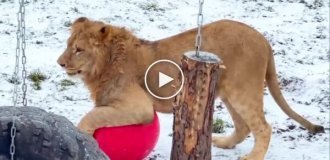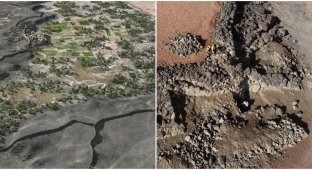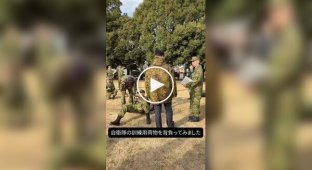Circus Maximus - the Great Circus of Rome (9 photos)
The Colosseum was the largest amphitheater in the Roman Empire, but not the largest stadium. That title belonged to the Circus Maximus, located just over half a kilometer southwest of the Colosseum. 
The Circus Maximus was the first stadium built by the Romans. It was originally built in the 6th century BC, but it did not acquire its final appearance until the time of Julius Caesar in the mid-1st century BC. Caesar extended the tiers of seating to surround the entire oval arena, with the exception of the starting gates and two entrances at opposite ends of the stadium. 
Model of the Circus Maximus
The tracks were over 600 meters long and 150 meters wide. According to various sources, the stadium's capacity ranged from 150,000 to 250,000 spectators. 
A view of the Circus from the southeast. The tower in the foreground is part of the medieval fortification
The main purpose of the Circus Maximus was chariot racing and Roman games called ludi, held in honor of the gods. The games were a popular form of entertainment in the Roman era. The days when ludi were held were declared holidays, and all business activity ceased. It is remarkable that the Romans had time to do anything at all, because ludi were held all year round. Sometimes these entertainments took up to 135 days a year. 
A view of the Circus grounds from the southeast
The games included horse and chariot races, athletic contests, theatrical performances, wild animal hunts, gladiator fights, as well as religious ceremonies and public banquets. Many of these events took place in the Circus Maximus. The games were opened with a lavish parade, during which the purpose of the games was announced and the participants were introduced. The most spectacular were the chariot races. Before the start of the race, the chariots were lined up at the starting line, and the emperor lowered the cloth, giving the signal for the race to begin. The gates would swing open and the competitors would rush forward, trying to cut each other off and force their opponents into the barrier that ran down the center of the arena. It was decorated with statues, obelisks, and columns. 
Other events, especially those involving wild animal fights and gladiatorial combat, were no less dramatic. In 169 B.C., a hunt was organized involving 63 leopards, 40 bears, and elephants. On another occasion, the Roman general Pompey staged a duel between a group of gladiators and 20 elephants. 
When the Colosseum was built in the late 1st century CE, gladiatorial fights and animal baiting were held there, and track and field events were moved to the purpose-built Stadium of Domitian. The Circus Maximus continued to host chariot races until 549 CE, when the last competition was held. After that, the structure fell into disrepair. 
Locals took it apart for stones and other building materials. Floods filled the lower levels with silt and debris. Now the original paths are at a depth of 6 meters. Over the centuries, the area has been used for various purposes: in the 16th century, it was a market, in the 19th century, a factory, and now it is a modern public park where concerts and meetings are held. 
Almost nothing remains of the original structure. Only fragments of spectator seats and one of the rounded ends of the arena are visible. 
























